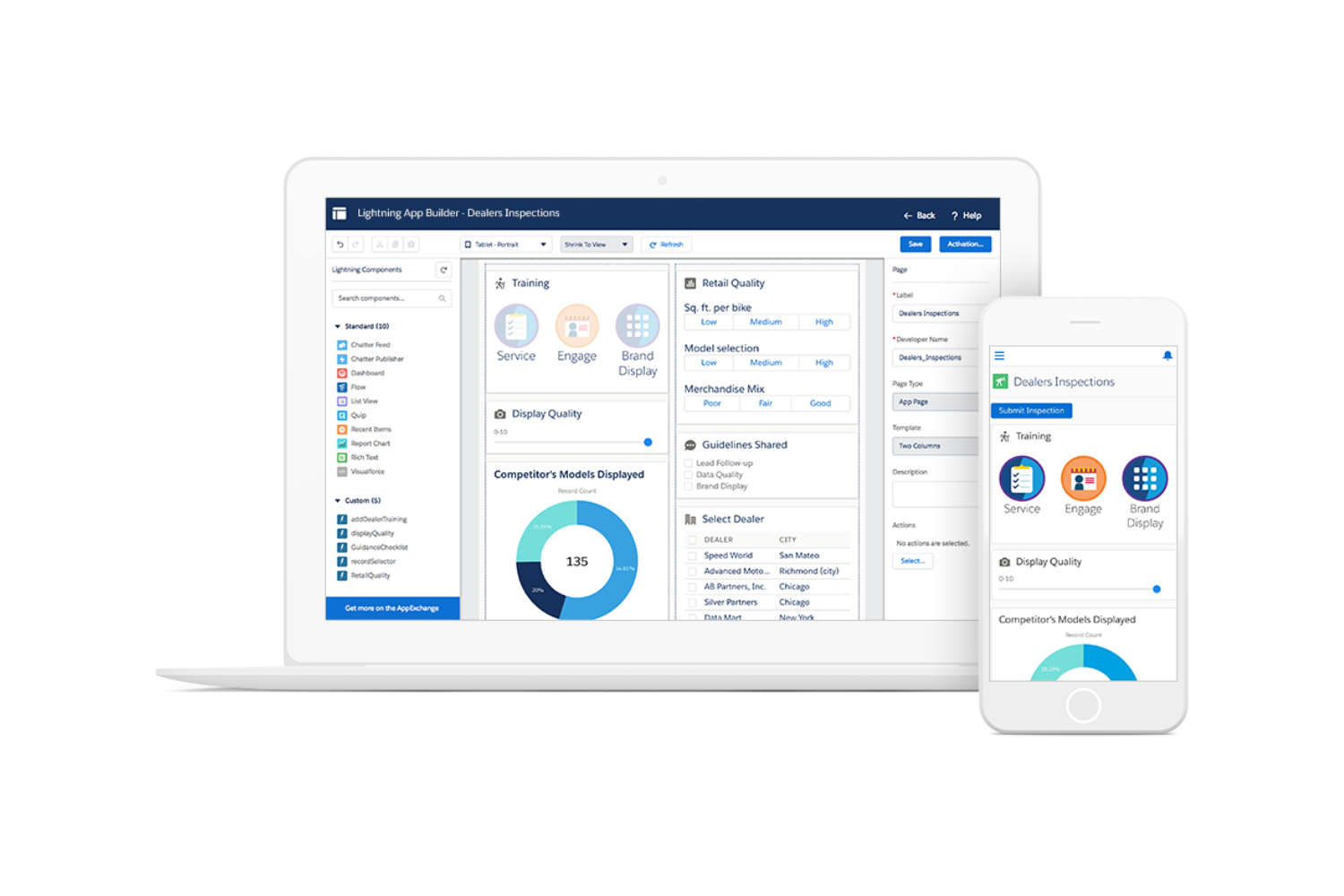Introduction
Welcome to the world of SaaS tools! In today’s digital era, businesses of all sizes are leveraging the power of software-as-a-service (SaaS) tools to streamline their operations, improve productivity, and achieve their goals more efficiently. But what exactly is a SaaS tool, and how can it benefit your organization?
SaaS, short for Software-as-a-Service, refers to cloud-based software applications that are accessed over the internet, rather than being installed on individual computers or servers. These tools are designed to provide businesses with a wide range of functionalities, such as project management, customer relationship management, accounting, collaboration, marketing automation, and much more.
Unlike traditional software, which requires manual installation and regular updates, SaaS tools are hosted on the service provider’s servers and can be accessed with just an internet connection and a web browser. This eliminates the need for costly hardware installations, ongoing maintenance, and software updates, saving businesses time and resources.
One of the primary attractions of SaaS tools is their flexibility and scalability. With a SaaS subscription, businesses can easily scale up or down their usage based on their needs. This means that whether you’re a small startup looking for basic features or a large enterprise with complex requirements, there’s a SaaS tool out there to cater to your specific needs.
Another key advantage of SaaS tools is their accessibility. Since these applications are hosted in the cloud, users can access them from anywhere, at any time, and from any device with an internet connection. This facilitates remote work, collaboration across geographically dispersed teams, and the ability to stay productive on the go.
Moreover, SaaS tools often come with built-in analytics and reporting features, allowing businesses to gain valuable insights into their operations, track performance, and make data-driven decisions. By having real-time visibility into key metrics and performance indicators, businesses can optimize their processes, identify bottlenecks, and drive continuous improvement.
More and more businesses are recognizing the immense value that SaaS tools bring to their operations. Whether you’re a startup, a small business, or a large enterprise, integrating SaaS tools into your workflow can help streamline your processes, increase efficiency, and drive growth in today’s fast-paced, digitally-driven world.
In the following sections, we will explore the working of SaaS tools, their benefits, common types of SaaS tools available, considerations for choosing the right tool, and examples of popular SaaS tools in the market.
Definition of SaaS
Software-as-a-Service (SaaS) is a cloud computing model where software applications are accessed via the internet on a subscription basis. In this model, the software provider hosts the application on their own servers, handles maintenance, updates, and security, and makes it available to users over the internet.
Unlike traditional software that requires installation on individual devices, SaaS allows users to access the application and its features through a web browser. This eliminates the need for expensive hardware, reduces the burden of software maintenance, and provides users with the flexibility to access the software from any device with an internet connection.
One of the primary characteristics of SaaS is its subscription-based pricing model. Instead of purchasing the software outright, users pay a recurring fee to access and use the application. This subscription model typically includes ongoing support, updates, and upgrades, ensuring that users always have access to the most up-to-date version of the software.
SaaS applications are typically multi-tenant, meaning that multiple customers or organizations can use the same instance of the software while keeping their data and configurations separate. This allows for efficient resource utilization and scalability, as the provider can easily allocate resources based on demand.
Another defining feature of SaaS is its rapid deployment and ease of use. Since the software is already installed and configured on the provider’s servers, users can quickly start using the application without the need for complex setup or technical expertise. This makes SaaS particularly appealing to small and medium-sized businesses that want to leverage advanced software functionalities without the high upfront costs or IT complexities.
SaaS applications are known for their accessibility and availability. Users can access the software and their data from anywhere with an internet connection, which promotes remote work, collaboration, and flexibility. Additionally, SaaS providers generally offer service level agreements (SLAs) that specify high uptime and availability, ensuring that users can rely on the application to be accessible when they need it.
Overall, SaaS offers businesses a cost-effective and efficient way to leverage powerful software applications, without the burden of installation, maintenance, and updates. With its subscription-based model, accessibility, and ease of use, SaaS has revolutionized the software industry and enabled organizations to focus on their core competencies while relying on experts to provide and manage their software needs.
How SaaS Tools Work
SaaS tools operate on a cloud-based infrastructure, enabling users to access and utilize software applications via the internet. This cloud-based approach eliminates the need for users to install the software locally on their devices, as all the necessary resources and functionalities are provided remotely by the SaaS provider. Here’s a breakdown of how SaaS tools work:
- Cloud Hosting: SaaS tools are hosted on the infrastructure maintained by the provider. This infrastructure includes servers, storage systems, databases, and networking components. The provider ensures that the infrastructure is secure, scalable, and reliable to accommodate the needs of all the users.
- Multi-Tenancy: SaaS applications are typically designed to support multiple users or organizations simultaneously. This multi-tenancy architecture allows each user or organization to have their own dedicated space within the application while sharing the underlying infrastructure. Data isolation and security measures are implemented to ensure that each user’s data is protected and remains separate from others.
- Web-Based Access: Users can access SaaS tools through a web browser, which serves as the interface for interacting with the application. This eliminates the need for complex installations and updates on individual devices, as the software is centrally managed and accessed online. The user interface of the SaaS tool is designed to be user-friendly and intuitive, allowing users to navigate and utilize the application easily.
- Subscription Model: SaaS tools operate on a subscription pricing model. Users pay a recurring fee, typically on a monthly or annual basis, to access and use the software. The subscription fee covers the cost of operating the infrastructure, maintaining the application, and providing support to users. This pricing model offers businesses greater flexibility, as they can adjust their usage and subscription level based on their needs.
- Scalability and Upgrades: SaaS tools are designed to be highly scalable, allowing businesses to accommodate growth or changes in their requirements. The provider can allocate additional resources or upgrade the infrastructure to handle increased user demand. In addition, updates and new features are rolled out by the provider on a regular basis, ensuring that users have access to the latest advancements and improvements in the software.
- Data Security: Protecting user data is a top priority for SaaS providers. They implement various security measures, such as data encryption, access controls, and regular backups, to ensure the confidentiality, integrity, and availability of the data. Compliance with industry-specific regulations and standards is also a crucial consideration for SaaS providers.
Overall, SaaS tools offer a convenient, scalable, and cost-effective way for businesses to access and utilize software applications. By leveraging the power of cloud computing, SaaS tools enable organizations to focus on their core competencies while leaving the management and upkeep of the software infrastructure to the experts.
Benefits of Using SaaS Tools
SaaS tools provide numerous advantages to businesses of all sizes, revolutionizing the way they operate, collaborate, and grow. Here are some key benefits of using SaaS tools:
- Cost-Effectiveness: SaaS tools eliminate the need for upfront investments in hardware, software licenses, and infrastructure. Instead, businesses pay a subscription fee, typically on a monthly or annual basis, to access and utilize the software application. This model significantly reduces IT costs and allows organizations to allocate their resources more efficiently.
- Scalability: With SaaS tools, businesses can easily scale their usage based on their needs. Whether you need to add or remove users, increase data storage capacity, or expand the features and functionalities, SaaS tools offer the flexibility to accommodate growth or changes in your operations without major disruptions.
- Accessibility and Collaboration: SaaS tools can be accessed from anywhere with an internet connection and a web browser. This promotes remote work, collaboration among geographically dispersed teams, and real-time access to data. Employees can work together on projects, share information, and contribute to the organization’s success regardless of their physical location.
- Automatic Updates and Maintenance: SaaS providers take care of software updates, bug fixes, and infrastructure maintenance, ensuring that businesses always have access to the latest version of the software. This relieves businesses of the burden of manual updates and allows them to focus on their core operations without interruptions caused by outdated software.
- High Security Standards: SaaS providers prioritize the security of their users’ data. They employ industry-standard security measures, such as data encryption, access controls, and regular backups, to protect sensitive information. Due to their expertise and focus on security, SaaS providers often have more robust security measures than what individual businesses can implement on their own.
- Cost Predictability: The subscription-based pricing model of SaaS tools allows businesses to forecast their software expenses accurately. The recurring fees provide cost predictability, enabling organizations to plan their budget and allocate resources accordingly. This eliminates unexpected expenses associated with software licenses, hardware upgrades, and maintenance.
- Quick Deployment and Ease of Use: SaaS tools are designed for rapid deployment, allowing businesses to start using the software almost immediately after subscribing. The providers handle installation, setup, and configuration, eliminating the need for IT expertise or complex installations. This ease of use ensures that employees can quickly adopt and utilize the tools for improved productivity.
- Focus on Core Competencies: By relying on SaaS tools, businesses can offload the management, maintenance, and updates of their software applications to the provider. This allows organizations to focus on their core competencies and strategic initiatives, rather than investing time and resources in maintaining software infrastructure.
Using SaaS tools not only saves costs but also enhances operational efficiency, promotes collaboration, and provides businesses with the tools they need to stay competitive in a rapidly evolving digital landscape. With their numerous benefits, SaaS tools have become an essential part of modern business operations across industries.
Common Types of SaaS Tools
SaaS tools cover a wide range of functionalities and cater to various business needs. Here are some common types of SaaS tools that businesses often utilize:
- Project Management Tools: These tools help businesses plan, organize, and track projects from start to finish. They offer features such as task management, team collaboration, time tracking, document sharing, and project progress monitoring.
- Customer Relationship Management (CRM) Tools: CRM tools enable businesses to manage interactions with their customers throughout the customer lifecycle. They provide functionalities like lead management, contact management, sales pipeline tracking, customer communication tracking, and analytics to enhance customer relationships and sales processes.
- Accounting and Finance Tools: These tools facilitate financial management, budgeting, invoicing, and expense tracking for businesses. They often offer features such as bookkeeping, financial reporting, tax management, and integration with banking and payment systems.
- Collaboration and Communication Tools: Collaboration tools allow teams to work together efficiently, regardless of their physical location. They provide features like real-time messaging, file sharing, task assignments, and project collaboration. Video conferencing tools and virtual meeting platforms also fall under this category.
- Human Resources (HR) Tools: HR tools streamline and automate various HR processes, including recruitment, employee onboarding, performance management, leave management, and employee data management. These tools simplify HR tasks, improve employee engagement, and ensure compliance with HR regulations.
- Marketing Automation Tools: Marketing automation tools help businesses automate marketing processes, such as email marketing, lead nurturing, social media management, and campaign tracking. They enable targeted and personalized marketing campaigns, lead generation, and customer engagement.
- Customer Support and Helpdesk Tools: These tools assist businesses in managing customer support requests and providing efficient helpdesk services. They typically offer features like ticket management, knowledge base management, live chat, customer self-service portals, and service level agreement (SLA) tracking.
- E-commerce Platforms: E-commerce platforms provide businesses with tools to build and manage online stores. They offer features such as product catalog management, shopping cart functionality, payment processing integration, order management, and inventory tracking.
- Data Analytics and Business Intelligence Tools: Data analytics tools help businesses analyze and derive insights from their data, enabling better decision-making. They offer features like data visualization, reporting, data exploration, and predictive analytics.
- Customer Success Tools: Customer success tools assist businesses in managing and improving customer satisfaction and retention. These tools provide features like customer health scoring, customer feedback tracking, engagement analytics, and proactive customer support.
These are just a few examples of the common types of SaaS tools available. The SaaS market continues to expand, offering a wide variety of specialized tools catering to specific industries and business needs. Choosing the right combination of SaaS tools can help businesses optimize their operations, improve productivity, and achieve their objectives more efficiently.
Considerations When Choosing a SaaS Tool
When selecting a SaaS tool for your business, it’s important to carefully evaluate your needs and consider several factors to ensure that you choose the right tool that aligns with your requirements. Here are some key considerations to keep in mind:
- Functionality: Determine the specific features and functionalities you require from the SaaS tool. Make a list of your essential requirements and prioritize them based on their importance. Ensure that the tool provides the necessary functionalities to meet your business needs.
- Scalability and Flexibility: Consider your business’s growth potential and future needs. Ensure that the SaaS tool can scale along with your business and accommodate any changes in user volume or usage requirements. Flexibility in terms of contract terms, pricing plans, and the ability to add or remove users easily is also important.
- Integration Capabilities: Assess the compatibility of the SaaS tool with your existing software ecosystem. Determine whether the tool integrates seamlessly with other applications you are already using, such as CRM systems, marketing automation tools, or project management software. Smooth data flow and interoperability between different tools can enhance productivity and streamline workflows.
- Data Security and Privacy: Data security should be a top concern when choosing a SaaS tool. Evaluate the provider’s security measures, such as data encryption, access controls, and compliance certifications, to ensure the protection of your sensitive information. Consider the provider’s privacy policy and data handling practices to ensure they align with your organization’s data governance requirements and industry regulations.
- User Experience and Ease of Use: The user interface and overall user experience of the SaaS tool are crucial factors to consider. A tool that is intuitive, user-friendly, and requires minimal training can increase user adoption and productivity. Look for demos, trials, or user reviews to gauge the tool’s usability and assess whether it aligns with your team’s capabilities.
- Support and Customer Service: Excellent customer support and service are essential when using a SaaS tool. Research the provider’s support offerings, such as email, chat, or phone support, and their response times. Look for testimonials or reviews regarding the provider’s level of customer service to ensure they are responsive and helpful in addressing any issues or inquiries.
- Cost and Pricing Model: Evaluate the pricing structure and determine whether it aligns with your budget. Consider factors such as the monthly or annual subscription cost, any additional fees for add-ons or premium features, and the potential for hidden costs. Compare pricing plans from different providers to ensure that you are getting the best value for your investment.
- Reviews and Feedback: Take the time to read reviews and seek feedback from other users or industry experts. Their insights can provide valuable information about the tool’s performance, reliability, and customer satisfaction. Platforms such as review websites or user communities can offer insights into the pros and cons of different SaaS tools.
- Vendor Reputation and Reliability: Conduct research on the vendor’s reputation and reliability in the market. Consider factors such as the vendor’s industry experience, client base, and financial stability. Look for testimonials or case studies from current customers to assess the vendor’s track record and commitment to delivering a quality product.
- Contract Terms and Exit Strategy: Review the contract terms and conditions carefully before committing to a SaaS tool. Understand the terms of service, contract renewal process, and any penalties or fees associated with contract termination. Ensure that you have an exit strategy in place in case you need to switch to a different tool or vendor in the future.
By considering these factors, you can make an informed decision when choosing a SaaS tool that meets your business needs, aligns with your goals, and provides a positive overall experience for your team.
Examples of Popular SaaS Tools
The SaaS marketplace is filled with a wide range of tools that cater to various business needs. Here are some examples of popular SaaS tools that are widely used by organizations:
- Slack: Slack is a collaboration and communication tool that enables real-time messaging, file sharing, and team collaboration. It offers channels for different projects or departments, direct messaging, and integrations with other tools, making it a powerful platform for remote collaboration.
- Salesforce: Salesforce is a leading CRM platform that helps businesses manage customer relationships, streamline sales processes, and drive business growth. It offers features such as contact and opportunity management, sales pipeline tracking, campaign management, and customer data analytics.
- QuickBooks Online: QuickBooks is a popular accounting and financial management tool designed for small businesses. It provides functionalities such as invoicing, expense tracking, financial reporting, and tax management, making it efficient for managing business finances.
- Trello: Trello is a project management tool with a visual and flexible approach. It allows users to create boards, lists, and cards to organize and track tasks, priorities, and project progress. Trello’s simplicity and visual interface make it a popular choice for project collaboration.
- Mailchimp: Mailchimp is an email marketing and automation tool that helps businesses create, send, and track professional email campaigns. It offers features such as contact management, email templates, marketing automation workflows, and analytics to nurture leads and drive engagement with customers.
- Zendesk: Zendesk is a customer support and helpdesk tool that enables businesses to manage customer inquiries and support tickets efficiently. It offers features like ticket management, customer self-service portals, live chat support, and knowledge base management to enhance customer support experiences.
- Google Workspace: Google Workspace (formerly G Suite) is a suite of productivity tools that includes Gmail, Google Drive, Docs, Sheets, and Slides. It provides businesses with cloud-based email, document collaboration, and file storage, enabling seamless productivity and collaboration across teams.
- HubSpot: HubSpot is an all-in-one marketing, sales, and customer service platform. It offers a suite of tools that include CRM, email marketing, marketing automation, social media management, lead nurturing, and customer support functionalities.
- Zoom: Zoom is a video conferencing and virtual meeting platform that has gained immense popularity in recent times. It allows businesses to conduct virtual meetings, webinars, and online training sessions, facilitating remote collaboration and communication.
- Asana: Asana is a project management tool that helps teams stay organized and track project progress. It offers features like task management, project timelines, team collaboration, and integration with other productivity tools, simplifying project management and improving team productivity.
These are just a few examples, and the SaaS market is constantly evolving with new tools and innovations. It’s important to explore and evaluate different options to find the tools that best suit your specific business needs and contribute to your overall success.
Conclusion
SaaS tools have revolutionized the way businesses operate, collaborate, and achieve their goals. With their cloud-based infrastructure, accessibility, and subscription-based pricing, these tools offer a cost-effective and efficient alternative to traditional software solutions. From project management and customer relationship management to accounting and collaboration, SaaS tools provide a wide range of functionalities to suit various business needs.
When choosing a SaaS tool, it’s crucial to consider factors such as functionality, scalability, integration capabilities, data security, user experience, and customer support. By carefully evaluating these considerations and selecting the right SaaS tool, businesses can streamline their operations, improve productivity, enhance collaboration, and drive growth.
Popular examples of SaaS tools include Slack for collaboration, Salesforce for CRM, QuickBooks Online for accounting, and Trello for project management. However, the SaaS market is constantly expanding, offering a plethora of specialized tools catering to specific industries and business requirements.
As technology continues to advance, the SaaS industry will evolve and bring forth innovative tools and solutions. Businesses should stay informed about industry trends and regularly explore new offerings to stay ahead of the curve and leverage the power of SaaS tools to their advantage.
Whether you’re a small startup, a growing mid-sized company, or a large enterprise, incorporating SaaS tools into your workflow can provide numerous benefits, including cost savings, scalability, accessibility, and improved productivity. Embrace the flexibility and power of SaaS tools to propel your business forward in this digital age.

























